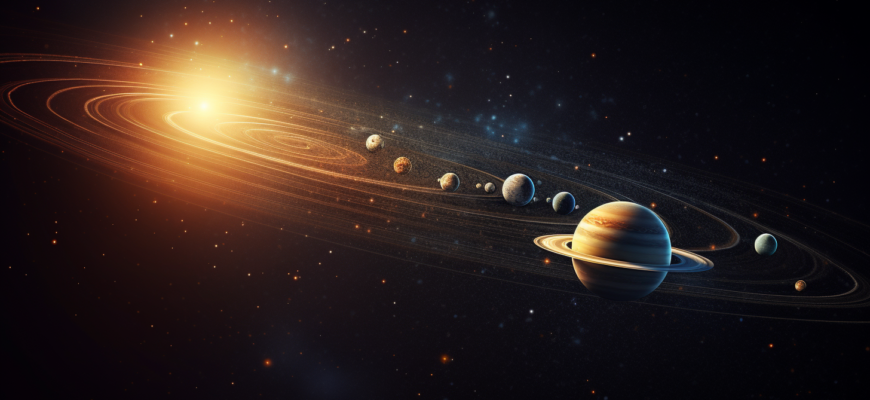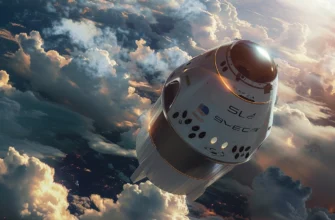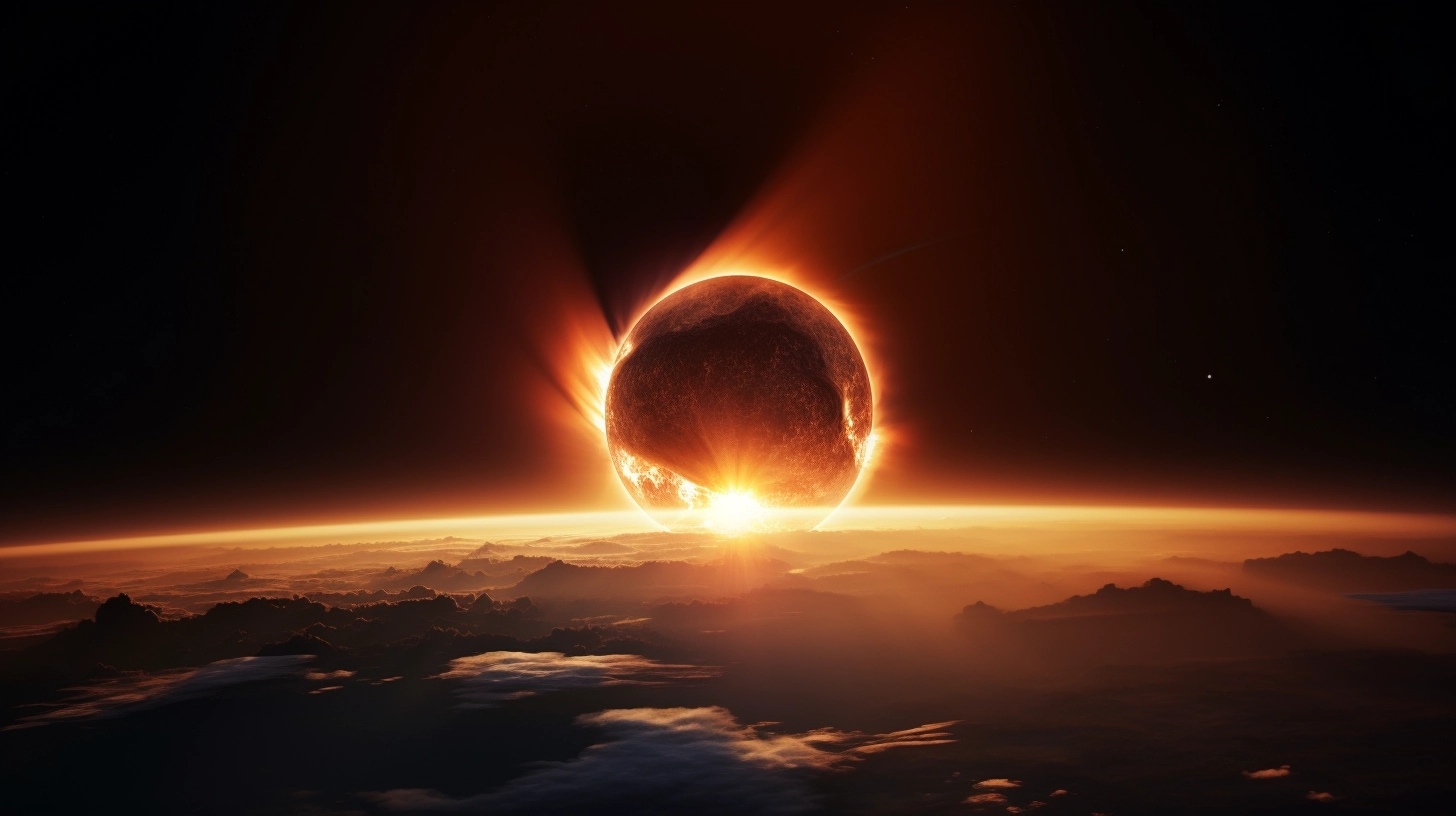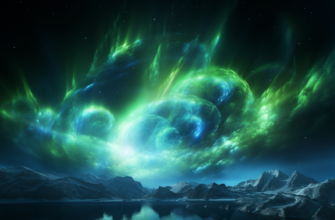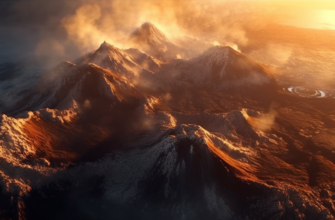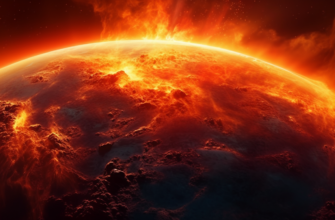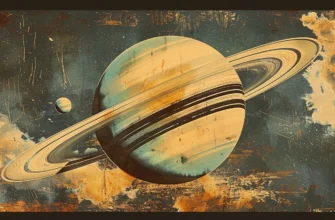Alignments of planets in our solar system are rare and wondrous events. When all the planets manage to line up perfectly along a straight line with respect to the Sun, it creates a truly remarkable sight that has captivated skywatchers and astrologers for millennia.
- What is a Planetary Alignment?
- What’s So Special About Planetary Alignments?
- Documented Historical Planetary Alignments
- May 5th, 2000 BCE
- February 1953 CE
- May 2000 CE
- Other Notable Alignments
- How Often Do Planetary Alignments Occur?
- Orbital Dynamics Behind Alignments
- When Will The Next Planetary Alignment Be?
- Can Planetary Alignments Affect Earth?
- Ancient Astrological Beliefs
- Modern Scientific Understandings
- Modern Symbolic Meaning
- Famous Images and Depictions of Alignments of Planets
- Ancient Depictions
- Modern Photographic Images
- Future Exciting Alignments To Watch For
- April 2026
- 2040 Triple Conjunction
- 2052 Five Planet Alignment
- 2492 Grand Alignment
- Conclusions
What is a Planetary Alignment?

A planetary alignment occurs when two or more planets, and the Sun and Moon, line up in a straight line in the same quadrant of the solar system. This arrangement means that all the planets appear in a row from the viewpoint of Earth.
There are a few different types of alignments that can occur:
- Conjunction – Two planets have the same longitude from the viewpoint of Earth. The two planets appear very close together in the sky.
- Opposition – Two planets are opposite each other across the Sun. This happens when the difference in the planets’ longitudes is 180 degrees.
- Great Alignment – When all the planets in the solar system align along one side of the Sun within a span of a few months or years. This very rare event is also sometimes called a Grand Alignment.
What’s So Special About Planetary Alignments?
Planetary alignments hold an almost mystical fascination and have inspired awe amongst astronomers, astrologers, and skywatchers across cultures and throughout history. Here’s why they are so intriguing:
- They are visually striking events, allowing people to see many or even all planets lined up together. This is a very rare occurrence.
- Ancient astrologers believed alignments had deep significance for events on Earth. They made predictions about human affairs based on rare alignments.
- Alignments allow the opportunity to capture images of the whole solar system (minus faraway dwarf planets) in one stunning frame. Modern astronomers can study multiple planets at once in detail during alignment periods.
- Seeing multiple planets arrayed together provides a unique perspective that emphasizes the clockwork precision of the solar system. The orbital planes of most planets are aligned within a few degrees.
Overall, the rarity and visual splendor of these alignments demonstrate the geometric harmony underlying our solar system.
Documented Historical Planetary Alignments
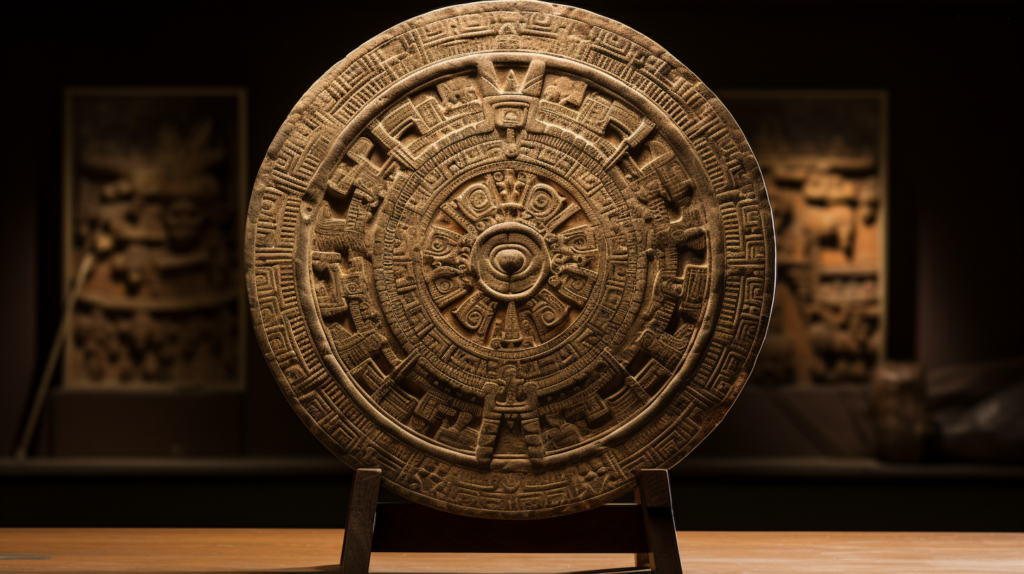
There are a number of recorded instances throughout history when most or all the planets visibly aligned in the sky:
May 5th, 2000 BCE
- A famous planetary alignment occurred in 2000 BCE. All five bright naked eye planets – Mercury, Venus, Mars, Jupiter and Saturn aligned in a diagonal line.
- This arrangement was so striking it was depicted on the Nebra sky disk, a Bronze Age artifact found in Germany considered the oldest concrete depiction of celestial phenomena.
February 1953 CE
- In February 1953, another alignment saw the same five naked eye planets stretched across the horizon within a 17 degree arc in the morning sky.
- Occurred shortly after the invention of high-quality photographic plates, allowing spectacular images of this alignment.
May 2000 CE
- On May 5th, 2000, the five naked eye planets aligned again within a span of 92 degrees.
- This arrangement had additional significance due to its coincidence with the discovery of the alignment on the Nebra sky disk marking a similar alignment in 2000 BCE.
Other Notable Alignments
Some other modern alignments of note:
- 1801 CE – First photographic documentation of a grand alignment with six planets stretched across the sky.
- 1962 CE – Groupings of up to five planets through February to March.
- 2020 CE – Parade of planets with Jupiter, Saturn, Mars, and Venus visible in alignment.
How Often Do Planetary Alignments Occur?
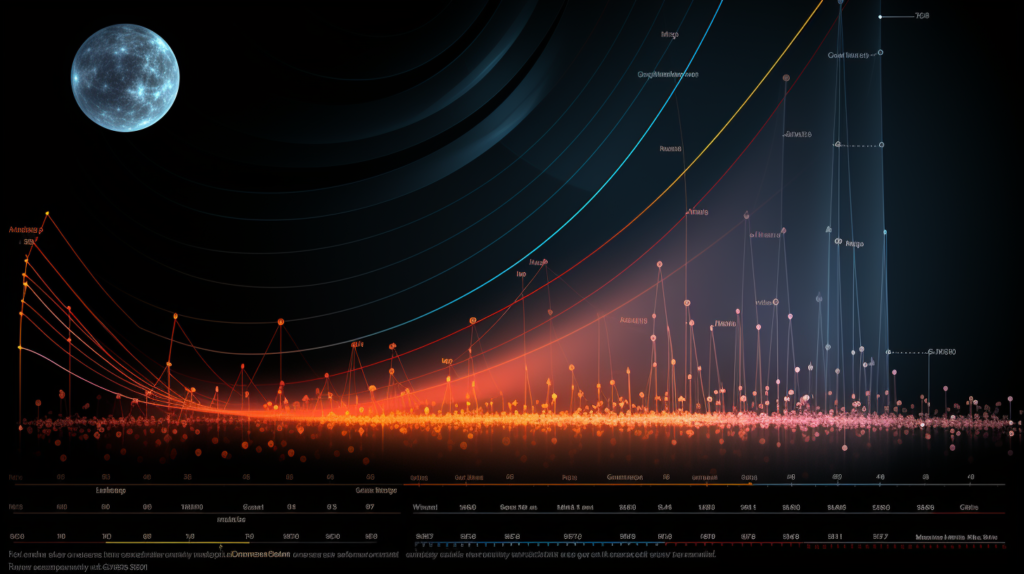
Planetary alignments involving a handful of planets are not exceptionally rare. Conjunctions between pairs of planets (especially the faster moving inner planets) occur every few years.
But alignments involving 4 or more planets are much more infrequent. They require the orbits of the worlds to coincide so that from Earth’s viewpoint they form a line across a region of the sky.
Grand alignments of all eight planets are very rare indeed, occurring roughly every 500 years. This is because the planets have different rotational periods around the sun. Jupiter completes an orbit in 11.9 years, while Neptune takes 164.8 years. Getting them all on one side of the sun is a matter of chance.
Orbital Dynamics Behind Alignments
The spacing and timing between planetary alignments stems from the orbital properties of the planets themselves:
| Planet | Orbital Period | Orbital Inclination |
|---|---|---|
| Mercury | 88 days | 7 degrees |
| Venus | 225 days | 3.4 degrees |
| Earth | 365 days | – |
| Mars | 687 days | 1.9 degrees |
| Jupiter | 11.9 years | 1.3 degrees |
| Saturn | 29.4 years | 2.5 degrees |
| Uranus | 84 years | 1 degree |
| Neptune | 165 years | 1.8 degrees |
The similar orbital inclinations between most planets is why they can achieve rough alignments. But due to the different orbital periods, these arrangements gradually shift and break apart over time.
When Will The Next Planetary Alignment Be?

The next grand alignment of all eight planets isn’t expected until around the year 2492. After that, predictions become fuzzy due to the complex gravitational interplay between worlds over these vast timescales.
However, between now and then there will be numerous lesser multi-planet alignments:
- April 2026 – Mars, Venus, Saturn, and Jupiter aligned in the morning sky within 11 degrees.
- Febuary 2040 – Alignment of Mars, Venus, Jupiter visible in the evening sky.
- November 2052 – Saturn, Venus, Mars, Jupiter align within a 21 degree arc.
So while grand planetary alignments are uncommon, smaller groupings of bright planets remain frequent enough to put on spectacular displays in the night sky.
Can Planetary Alignments Affect Earth?
Ever since the planetary alignments recorded on the Nebra sky disc, people have speculated whether these events hold astrological significance for life on Earth. Even in the modern age, there remains a mystical allure about the planets coming into harmony with one another.
But what real impact, if any, do planetary alignments have on events on our planet?
Ancient Astrological Beliefs
Ancient Babylonian astrologers saw meaning in planetary cycles reflecting changes in human affairs. Later Greek, Indian, Chinese and Medieval astrologers created complex systems linking celestial alignments to worldly matters, from weather to the fates of kings and commoners.
Some astrological traditions directly link planetary alignments with events on Earth, while others see them as visual omens signifying shifts in celestial cycles and energies said to shape reality on Earth.
Modern Scientific Understandings
Modern science holds that gravitational interactions between planets have no direct or discernable effect on our planet or daily life. Earth is dominated by the gravitational pull of our much larger Sun. Any combined gravitational effects between planets are negligible.
Furthermore, modern psychology sees no causal links between celestial events and human behavior or personality on an individual level.
But some intriguing studies have shown subtle correlations between planetary alignments and global events in history:
- One 2020 study found alignments involving Jupiter and Saturn occurred before the outbreak of historical pandemics like the Plague and Spanish Flu.
- Other analyses note alignments often coincided with periods of social unrest, wars and instability through history. Though no definitive link has been proven.
So gravitational alignments likely carry no astrological force affecting Earth. But some tantalizing clues hint they reflect larger cosmic cycles that might subtly shape events. Much more research is needed in this area.

Modern Symbolic Meaning
Today, even as belief in astrology declines, planetary alignments still captivate public imagination about humanity’s place in the cosmos. They serve as symbolic reminders of the intricate astronomical clockwork enabling life on Earth.
Rare grand alignments of all eight planets also represent a visual “family portrait” of our star system coming together, continuing to inspire awe all these centuries after the Nebra sky disc first depicted one.
Famous Images and Depictions of Alignments of Planets
Planetary alignments have visually fascinated people since ancient times. Whenever bright naked eye planets draw close, people instinctively notice and pay attention. Modern astronomical imaging has also captured spectacular photos of grand alignments.
Ancient Depictions
- The 3,600 year old Nebra sky disc features a grand alignment prominently. This Bronze Age artifact depicts lunar, solar and celestial events and is considered the oldest concrete depiction of cosmic phenomena.
- Medieval Persian artwork like the 13th century Book of Fixed Stars contains elaborate scrollwork depicting alignments of planets, likely holding astrological/astronomical significance.
- Renaissance painting The Magi Journeying (c.1504 CE) shows three bright planets alignment under the Star of Bethlehem, symbolizing the fabled Biblical Star guiding the Three Wise Men.
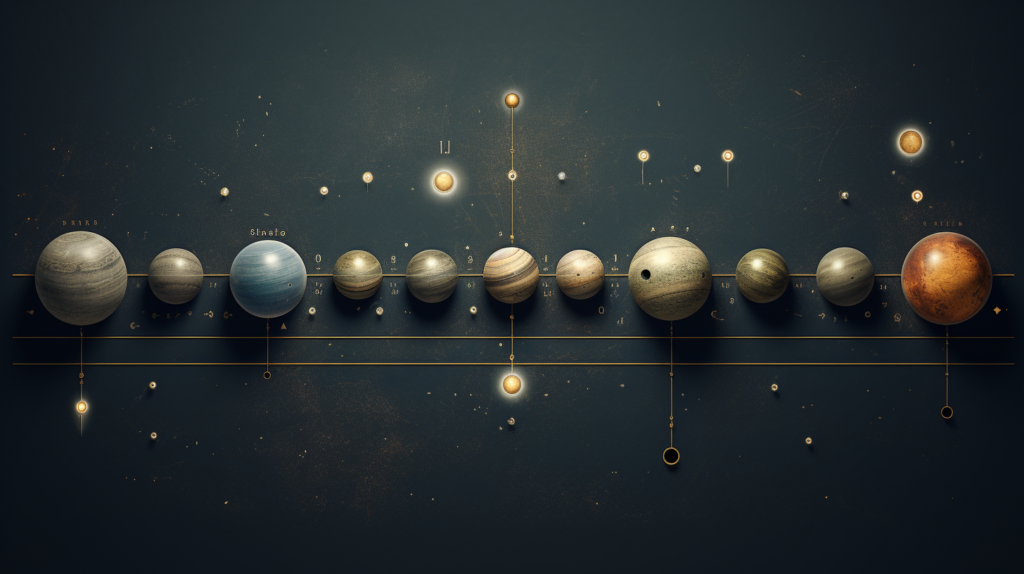
Modern Photographic Images
Advances in telescopy, photography and computer imaging have recently allowed stunning pictures of rare grand alignments:
- The 2006 “Looking Down the Barrel” Hubble image captures a shot of every planet except Mercury lined up on one side of the sun.
- Photographer Rogelio Bernal Andreo created a dazzling composite of the 2020 great conjunction of Jupiter/Saturn.
- Astro-photographer Göran Strand imaged the 2020 Jupiter/Saturn conjunction alongside positions of other planets to show the whole alignment.
We can expect even more incredible photos in years ahead as alignment opportunities arise. Modern technology now gives us ringside images of these celestial events.
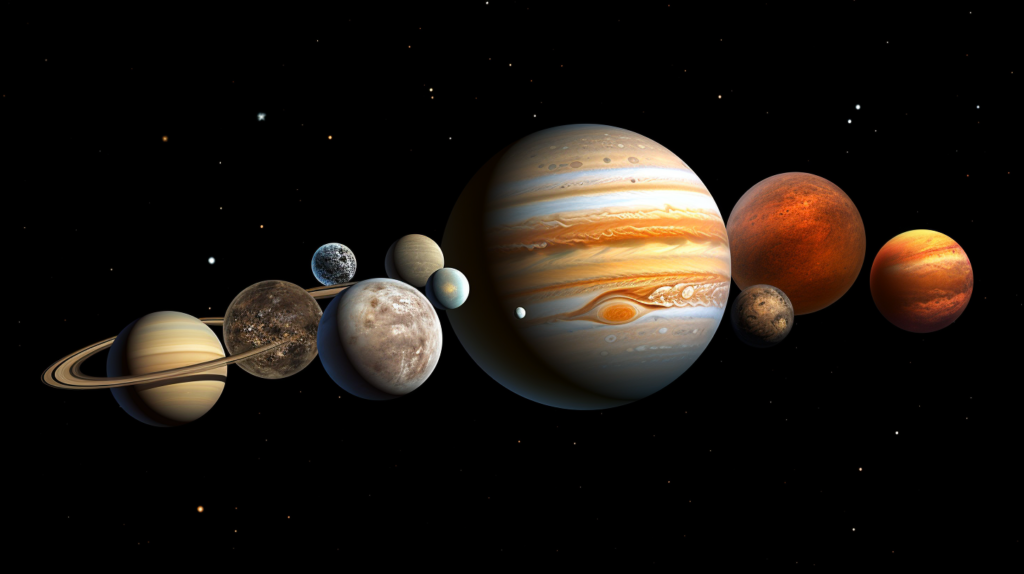
Future Exciting Alignments To Watch For
Planetary alignments never fail to generate excitement amongst astronomers and the public. What rare alignments lie ahead in the coming decades we can look forward to witnessing?
April 2026
In April 2026, Mars, Venus, Saturn and Jupiter will align in the dawn sky within 11 degrees of each other. This event will allow observation of these planets simultaneously through telescopes, great for detailed comparative study.
2040 Triple Conjunction
November 2040 brings a spectacular set of planetary conjunctions. First Mars joins up with Venus in a close pairing visible to the naked eye. A few days later a Jupiter/Venus conjunction occurs. Finally Mars draws close to Jupiter as well.
2052 Five Planet Alignment
In November 2052 the planets align to put on their biggest show for decades. Saturn, Venus, Mars and Jupiter will stretch across 21 degrees of the morning sky. Pluto sits opposite this alignment, with the moon positioned fittingly in the center of them all.
2492 Grand Alignment
This is the next estimated grand alignment involving all eight planets occurring in one part of the solar system sometime around the year 2492. This extremely rare event only repeats every 500 years or less. Seeing our solar system fully align will be the ultimate fulfillment of celestial harmony for astronomers and skywatchers alike!
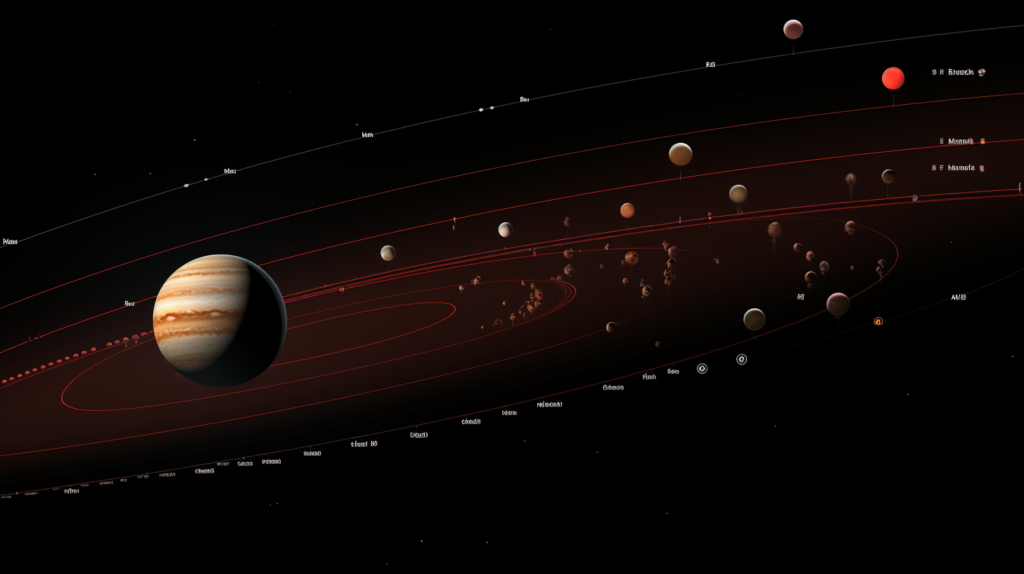
Conclusions
Planetary alignments stand as profound demonstrations of the clockwork precision and beauty built into the orbits of the solar systems worlds. They have inspired awe through the ages and serve as symbolic reminders humanity is part of a larger cosmic dance.
Grand planetary alignments involving most or all planets are the most spectacular. But conjunctions between individual planets also put on dazzling displays in the night sky for those hoping to witness these wonders.
Astronomers eagerly await each grand alignment as opportunities to image the whole solar system on one side of the sun. And alignments continue to fascinate astrologers as well, with subtle hints they may even tie into unseen energies impacting events on Earth.
Upcoming years bring many promising planet pairings we can view. But to see all eight worlds align again, we must wait patiently for the early 25th century. In the meantime the rarity increases the significance of any multi-planet alignments the night sky gifts us.

